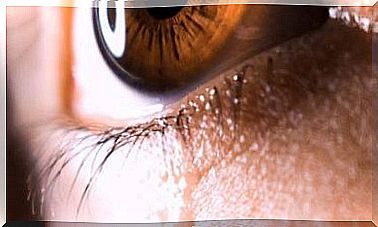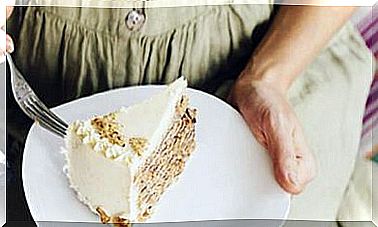Painting Your Nails: What Toxins To Avoid And Home Remedies To Take Care Of Them
Nail polishes give your hands a neat look, but there are more natural ways to show off beautiful nails. If you use them, it is advisable to choose the least toxic ones and let your nails rest from time to time.

The custom of painting your nails goes back a long time, but it was at the beginning of the last century that nail lacquers as we know them today were launched and their formula was based on the formulas of car paints !
So our nail polishes have little to do with what the Egyptians used, who painted their nails with henna; the Romans, who used plant extracts, or the Chinese royalty, who used gold dust.
Today, when we look for a nail polish, we want it to be a product that is easy to spread, that does not drip, forms a film of uniform color, dries quickly and lasts for a longer or shorter time. Different laboratories have spent years trying to find the perfect formula.
What are nail polishes made of?
In order for the nail polish to have the characteristics we are looking for, different substances are used in its composition:
- As the main ingredient, a solvent is required that allows the correct extension of the enamel.
- Toluene has been used for a long time to evaporate quickly and dry the lacquer . But due to its toxic effects, it is being replaced by ethyl and butyl acetates.
- Resins and polymers are responsible for forming a film and providing fluidity to the formula. Most frequently, nitrocellulose is incorporated for this purpose, which except in isolated cases is free of toxicity.
- The plasticizers are used to prevent the nail polish is descascarillen and to brighten nails.
- Although phthalates are still found in many products, they are being replaced by other less harmful polymers.
- Of course, color pigments are also integrated into the formulas.
What ingredients should we avoid in nail polish
At present, in the Spanish market, there are no nail lacquers that meet 100% the requirements of natural cosmetics, but it is possible and it is advisable to choose those that do not contain substances in their formula that have demonstrated their toxicity, such as example:
- Phthalates. They produce dermatological allergies, respiratory problems and, when they enter the body, they can cause genetic mutations and tumor processes.
- Formalin or formaldehyde. Over time it colors the nails yellow. When inhaled, it is irritating to the skin and the respiratory system.
- Toluene. It acts as a solvent. By ingestion it produces dizziness and vomiting. Inhalation, respiratory disorders. It can accumulate in the liver and is very irritating on the skin.
In many situations, the adverse reactions do not occur directly on the nails, which are poorly permeable and do not absorb what is put on them, but rather the problems occur when putting the hands to the face with painted nails, and, on everything, to the mouth and eyes, much more sensitive areas.
Bringing the face closer to paint the nails, either the hands or the feet, increases the risk of inhalation and contact with the product, and therefore the risk of harmful effects on the body.
How to choose a more “natural” nail polish
When some manufacturers began eliminating these ingredients, these products were labeled ” 3-free. ” Then ” 5-free “, ” 7-free ” products appeared …, alluding to the elimination of other substances (gluten, ingredients of animal origin, parabens, perfumes, camphor, xylene …), but there is no one regulation on these denominations and they do not always mean the same thing.
The people with absolute intolerance nail polish can gently polish the nails with a file and thus provide them with a similar to that of a gloss enamel.
If you decide to paint them, choose an enamel with the least possible number of toxic ingredients, avoiding at least the three that we have mentioned.
Whether you paint them or not, your nails require constant care that will help you keep them healthy and beautiful.
Home remedies for nails
Nails grow slowly : those on the hands take half a year to fully develop, and those on the feet, about a year and a half. Therefore, any care that is carried out must be constant: the effects of good care will be noticeable over time.
- Soak your nails in warm almond oil for about ten minutes. It nourishes and strengthens them.
- If you add a few drops of orange juice to this almond oil, you will also give them elasticity and shine.
- To remove the dead skin around the nail you can perform a small peeling using the same oil mixed with some sugar.
- To lighten nail color and remove stains, mix baking powder and lemon juice.
Choose a natural nail polish remover
When removing lacquers, special attention should also be paid to the dangers of nail polish removers. Since enamels are nonpolar organic products (insoluble in water), powerful solvents are needed, such as acetone. This, in addition to drying the nail, removes its fatty layer and that of the skin that comes into contact. It has a strong odor that can be irritating.
There are solvent alternatives such as ethyl lactate, natural and biodegradable, which does not mistreat the nail and which, formulated with oils such as castor oil, can protect it.
In general, it is best to try to leave your nails unpainted at least a couple of days a week so that they perspire. They will look stronger and prettier that way.









